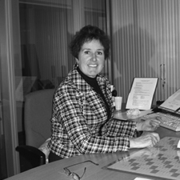Ten years on: the impact of human papilloma virus vaccine
Globally HPV is still the most frequent sexually transmitted virus. Certain genotypes cause virtually all cases of cervical cancer, a disease which kills over a quarter of a million women per annum, as well as causing morbidity and mortality from anogenital and oropharyngeal disease in both genders. However back in October 2005 it was reported that Phase III trials, involving twelve thousand women in thirteen countries, had demonstrated that Merck’s quadrivalent HPV vaccine, Gardisil, was 100% effective in preventing pre-malignant cervical lesions. This vaccine, genetically engineered in Brisbane and first licenced for use in public health programmes in Australia, the US, Mexico, Gabon and Europe a decade ago, targets HPV genotypes 6/11 as well as HPV16/18. The former low-risk genotypes cause 90% of anogenital wart infections; it is estimated that the latter high-risk genotypes are responsible for 70% of cervical cancers and 80% to 90% of other HPV-related neoplasms including anal, penile and oropharyngeal cancers. Other vaccines, all of which target the high-risk genotypes HPV 16/18, are now in use. The most recently approved also includes the less common oncogenic genotypes 31/33/45/52/58. HPV vaccine is now approved for use in 129 countries. So after a decade what has been the impact on health from the more than 205 million doses of HPV vaccine that have been distributed worldwide?
The beneficial effect is particularly apparent in countries where there is a high uptake of girls who are vaccinated before they become sexually active. Both infections with HPV and genital warts have plummeted by 90%, with a reduction of 85% in high-grade cervical abnormalities. Data reporting lower numbers of cervical cancer cases post-vaccine will surely follow. The bad news is that the full potential of the vaccine has yet to be realized. Only 64 countries actually include HPV vaccination in their national immunization schedules, and the less developed nations are less likely than the West to have effective programmes that require three timed inoculations and high population coverage. In developed countries such as the US imprudent parents still refuse the vaccine because of possible safety concerns or more bizarrely because they think it will encourage sexual promiscuity in their offspring. However the good news is that in China, which has 28% of the global cervical cancer cases but a particularly cumbersome drug approval process, HPV vaccine has finally been approved and will be available in 2017. Surely a fitting memorial to the late Chinese co-inventor of the initial vaccine, Dr Jian Zhou!


